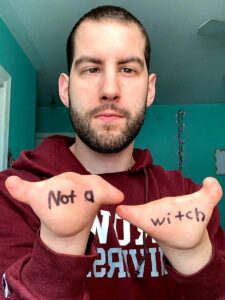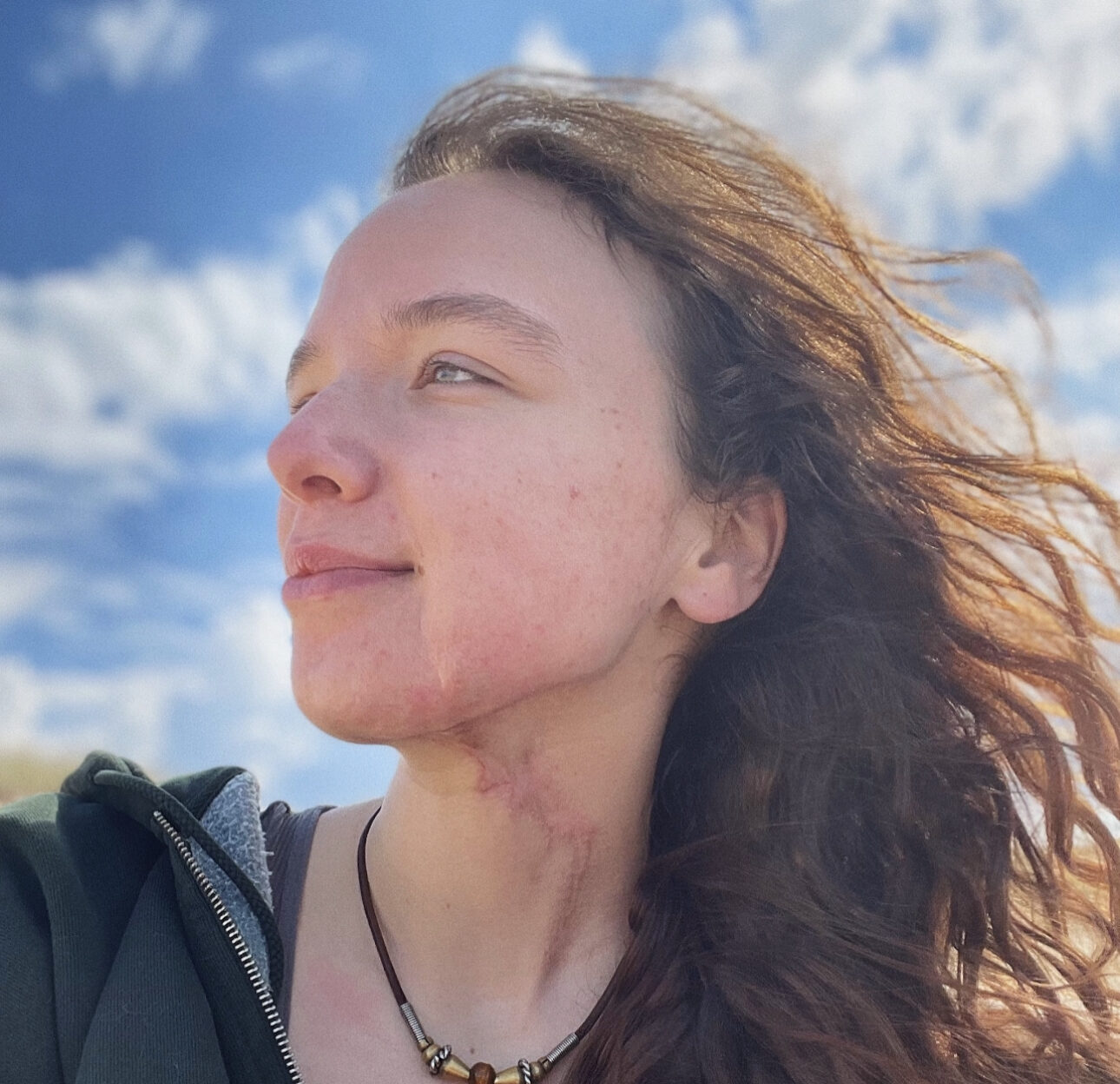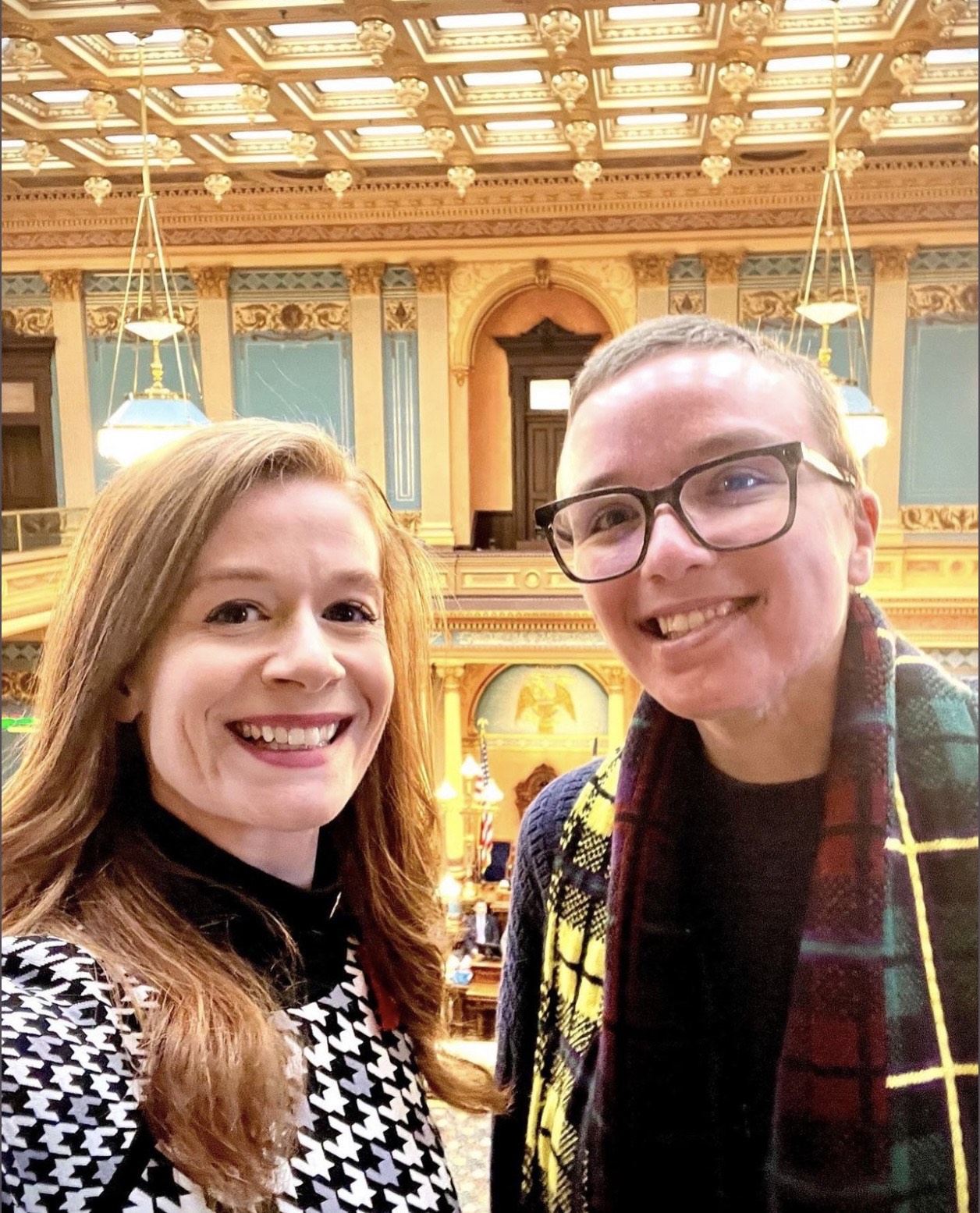Backlash from disabled people about “The Witches” reveals harmful stereotypes.
Kathleen R. Bogart Ph.D.
Think about your underlying assumptions about disability. What causes disability? What are the sources of and solutions to disability-related challenges? Experts categorize ways of thinking about disability into three general models: moral, medical, or social (Olkin & Pledger, 2003). Our beliefs about disability are reflected in and perpetuated by media depictions.

David Garcia wrote “Not a witch” on his limb differences to protest “The Witches.”
Source: David Garcia
Moral Model
This model encompasses beliefs that disabled people or their families are morally responsible for their disability. According to the moral model, disability is a punishment for sins, a representation of internal evils, a curse, or a result of karma. It is the reason why people with disabilities are still hidden away and kept a family secret in some cultures.
We might call the moral model archaic, but we still see evidence of this model in our culture today. Most recently, the movie The Witches has come under fire from the disability community for depicting the witches as having limb differences—three fingers on each hand and a single toe on each foot. The witches’ CG-created hands and feet mimic limb disabilities such as ectrodactyly. In his original book, Roald Dahl described the witches as having “cat-like” claws, and in the 1990 movie adaptation, the witches had long, pointed nails on five-fingered hands. So why the new look? In a statement, Warner Bros. said that they invited designers to reimagine the look of the witches for the new movie. Both Warner Bros. and Anne Hathaway
, who plays the Grand High Witch, have released statements saying they did not make the connection between the witches’ appearance and disability. It may be true that the movie makers did not consciously see the resemblance; however, a modicum of research and input from the disability community would have revealed this is a recapitulation of a lazy and harmful trope. People with limb differences like Dr. David Garcia have responded with the hashtag #NotAWitch.
Hollywood has a long history of using physical differences as a symbol of villainy. Think of Dr. Poison in “Wonder Woman,”
Freddy Kruger, the Joker, and almost all Bond villains. The villains Scar from The Lion King and Captain Hook from Peter Pan are named after their visible differences. These depictions perpetuate cultural associations between visible difference and evil. Disabled activists have long advocated for more and more realistic representation in media.
Medical Model
The most common way of thinking about disability in Western cultures is the medical model. This view sees disability as the direct result of abnormalities in the body or mind, which it aims to cure. The medical model offers valuable innovations for treating painful symptoms. However, this model locates the problem within the disabled individual, and the responsibility for treating the disability is limited to the disabled person, their family, and an esoteric group of healthcare specialists. Limiting the responsibility of supporting disabled people to a small group perpetuates the idea that disability is an exception, rather than a common human experience. While the medical model is a step forward, our understanding of disability is incomplete until we consider social factors.
Social Model
Disability activists and scholars emphasize the role of society in constructing and defining normality. The social model asserts that society is the primary cause of disability, and the “problem” lies in society, not in the individual. Society’s lack of accommodation of human variation is viewed as the cause of the disabling experience (Olkin & Pledger, 2003). Disability occurs because societies are constructed based on the assumption that everyone functions according to a culturally defined norm.
For example, there is an impairment that more than half of Americans have, but we don’t consider it a disability. It’s refractive error (nearsightedness, farsightedness, etc.; Vitale et al., 2008). When I ask my students why using corrective lenses is not considered a disability, they usually say it’s because glasses and contacts are easy to make. But it’s not that it is inherently easy to create lenses, it’s that we were motivated to devote the resources to doing so. In fact, glasses may be the first assistive technology, developed in the 13th century (Ilardi, 2007). Lenses seem like simple accommodations because they are common, effective, and inexpensive. Our society values equality; we can and should do this for more human variations, regardless of how common or rare.
Disabled people are more likely to have a social model perspective than nondisabled people (Bogart et al., 2019). A classic social psychological concept may help explain why. The actor-observer effect indicates that we can recognize how the power of the situation shapes our own behavior, but when we observe the same behavior in others, we neglect to see the role of the environment and assume that a person is behaving that way because it is who they are (Dunn, 2019). For example, you are likely to blame someone else for being late to a meeting, making attributions about them as a person (e.g., they are irresponsible or don’t respect your time). On the other hand, if you are late to a meeting, you are more likely to recognize the situational factors at play (e.g., your child woke up sick that morning, or a car accident stopped traffic). Similarly, this occurs for people with disabilities. Disabled people can readily recognize the social and environmental barriers (e.g., a major factor preventing employment of people with physical disabilities is a lack of accessible workplaces). People without disabilities, as observers, may assume that the problem is inherent in the person (e.g., viewing disabled people as lazy or incompetent).
Toward Inclusion
Our underlying assumptions about disability predict our attitudes and behaviors toward people with disabilities (Bogart et al., 2019). Moral model ideas perpetuate fear or disgust toward people with disabilities and can underlie decisions to keep disabled people hidden or separated from the rest of society (e.g., sheltered workshops, segregated special education classrooms). When exclusively adhered to, the medical model promotes the idea that the only “solution” to disability is a cure. This can lead disabled and nondisabled people alike to view anything less than a cure as a failure. The social model puts the onus of change on society to create an accessible and inclusive world.
People with disabilities may be the largest minority group in the United States, at 26% of the population, yet they are the most underrepresented in TV, movies, and the media at large. For example, only 3% of TV characters had a disability in the 2019-2020 season
When there are characters with disabilities, they are usually written and portrayed by non-disabled people, which can lead to inaccurate, stereotyped portrayals. However, there are some promising exceptions. For example, Ryan O’Connell, who has cerebral palsy, writes, produces, and stars in the hilariously dark Netflix series Special.
Representing people with disabilities in the media as complex human beings is crucial to forming an inclusive society.
References
Bogart, K. R., Logan, S. W., Hospodar, C., & Woekel, E. (2019). Disability models and attitudes among college students with and without disabilities. Stigma and Health, 4(3), 260–263.
Dunn, D. S. (2019). Outsider privileges can lead to insider disadvantages: Some psychosocial aspects of ableism. Journal of Social Issues, 75(3), 665-682.
Ilardi, V. (2007). Renaissance Vision from Spectacles to Telescopes. United States: American Philosophical Society.
Tags: Blog, Face Equality, facial difference, representation, research, self-acceptance, visible difference Posted by


